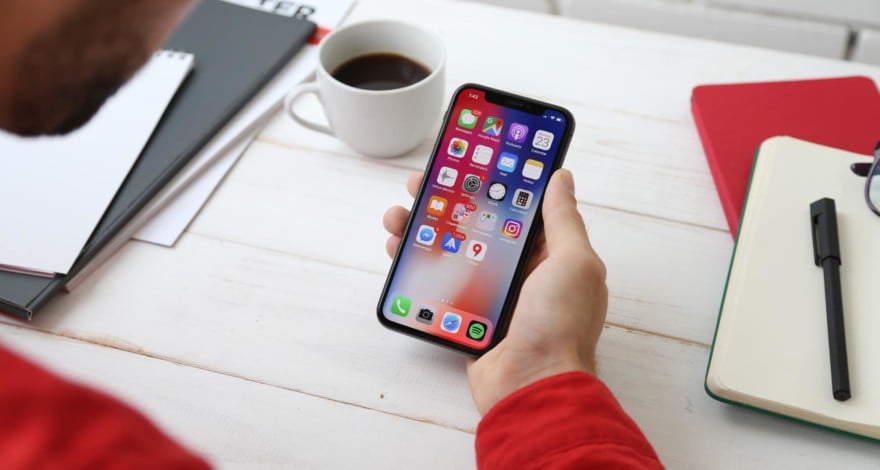-
Get Cloud GPU Server - Register Now!
Toggle navigation

June 2007 when Apple Inc. released its first iPhone can be regarded as a watershed moment in the history of the mobile industry. iPhones have since acquired and maintained a coveted position among the tech-savvy millennials notwithstanding the inundation of android devices in recent years.
In order to keep up with the expectation of its users, Apple keeps on incorporating novel features into its devices-the iPhone maker releases a new version of iOS almost every year. This indubitably poses a challenge for millions of iOS developers who need to offer the best to their users despite the technological upheaval.
In this post, we’ll go through the major challenges iPhone app developers face during the development process. So, let’s dive in.
That Apple releases a new iOS version every twelve months is no secret. Its latest version of iOS, iOS 13 was released in September 2019 after iOS 12 in September 2018. Because every version brings with it the latest technological advancements, iOS developers need to update their apps to match the standards of these versions.
Then Apple also manufactures other devices in addition to iPhone-iPads and iPods. iOS developers need to examine the compatibility of their apps across different devices and address issues, if any, on time.
Besides, a large percentage of iPhone users don’t upgrade to the latest version. This simply means different app users have different versions of the iOS installed on their devices. This is a challenge for any iPhone app development company as they need to ensure compatibility across different versions as well as different screen sizes. Failing to do so can make them lose customers.

Suggested Reading: Which apps won’t work in iOS 13?

Unlike their android counterparts, iOS devices don’t have a garbage collection function. The purpose of this function is to identify and discard objects no longer needed by a program so that their resources can be reused.
So any iPhone app development company needs to strike a balance between the performance of their app and memory constraints of the device. And this understandably is a challenge.
Besides, the app may have been developed for a single version of iOS but the same version will run on different devices, all of them with their own set of memory and storage. So, if an app consumes a lot of space, hardware constraints may render the app unusable.
The solution lies in focusing on the performance of the app and getting rid of redundant features that make it cumbersome.

An app may be unparalleled in terms of features, but what if the same features exhaust battery of the mobile device? A lot of users will not think twice before uninstalling the app. iOS app developers, therefore, need to establish a trade-off between performance and battery life. They have to incorporate powerful features into their app while ensuring the app is battery-friendly.
Must Read: 6 Tips to Consider Before Starting IOS Development

One of the reasons behind the popularity of iOS applications is their superior user experience and clean design concept. An iPhone app development company needs to keep these in mind while building the app.
They have to ensure the interface contains only those functions and features that are absolutely necessary-this will allow for user-friendly process flow.
Plus, the trends in design keep on changing from time to time. Incorporating the latest UI/UX design trends in an app will give it an edge over the competition.

As of today, Apple’s App Store has close to 1.84 million apps available for download. This is a whopping figure considering Apple’s stringent guidelines for approving an app. Apps get rejected on account of a minuscule rule violation.
What’s even worse is that Apple changes its app development guidelines on a frequent basis to protect the integrity of its devices. It takes a minimum of four days to get an app approved from its App Store.
In such a scenario, it becomes imperative for any iPhone app development company to familiarize itself with Apple’s guidelines and remain up-to-date with the company’s latest standards of content code, metadata, intellectual property rights.
Suggested Reading: App Store Review Guidelines

As we embark into a new decade in 2020, we have to gear up for the cybersecurity challenges that lie ahead. Thanks to artificial intelligence and machine learning, hackers are getting smarter with each passing day. So, unless there are robust security measures in place, user data remains vulnerable.
The onus lies on app developers-they have to ensure sophisticated encryption measures are in place to ward off security issues.

Poor network connectivity poses an issue for apps that fetch streaming services and videos from the internet. While developers may test an app using a strong network connection, users may not necessarily use the app under similar conditions.
Thankfully, Apple has the solution: its integrated development environment (IDE) Xcode offers a tool Network Link Conditioner that can simulate various network conditions such as high network latency and reduced bandwidth.
So, testing your app using Network Link Conditioner is the wise thing to do-it gives a taste of the real-world conditions.
Suggested Reading: Use Network Link Conditioner When Testing Your App
Several users aren’t contented with iOS alone. They use different operating systems: Windows, Linux and Mac. They need apps that can be easily synchronized across all devices: desktops, tablets and laptops so that they can access and operate the app as per their convenience. Making your app compatible with all platforms gives it an upper hand.
This appears to be an almost impossible task at first, considering the pace at which technology changes these days. Changes happening over a span of 2-3 years can render your app obsolete.
The only way out is to adapt to the evolving technology and changing tastes of your user base. Keep yourself abreast of the latest releases of Apple and analyze its product line to predict what’s next in the line.
Facing challenges as an iPhone app development company? If yes, connect with our experts today. We will be glad to address your issues.